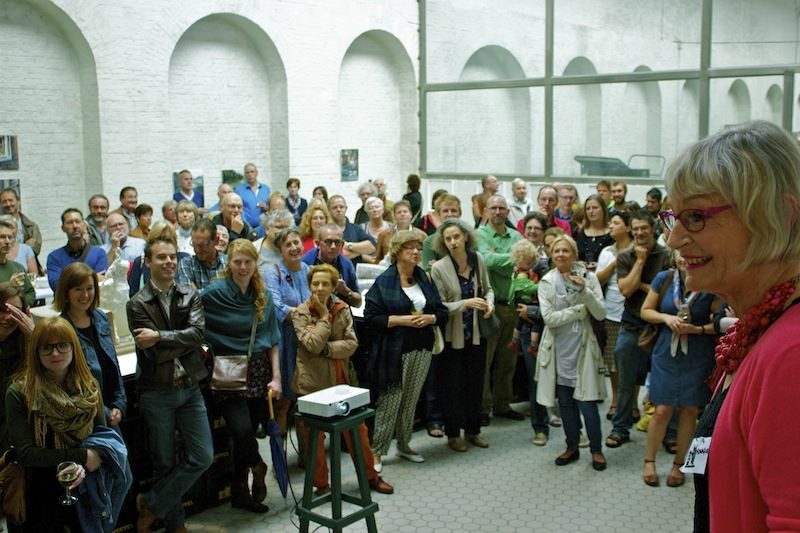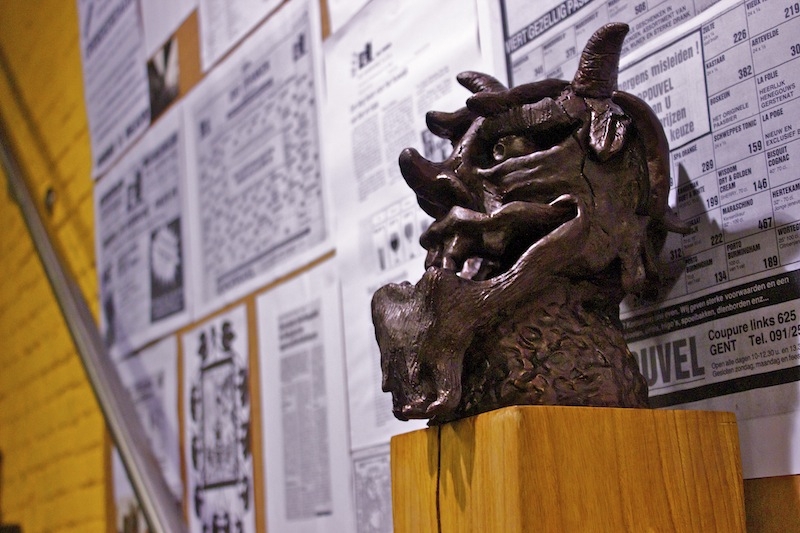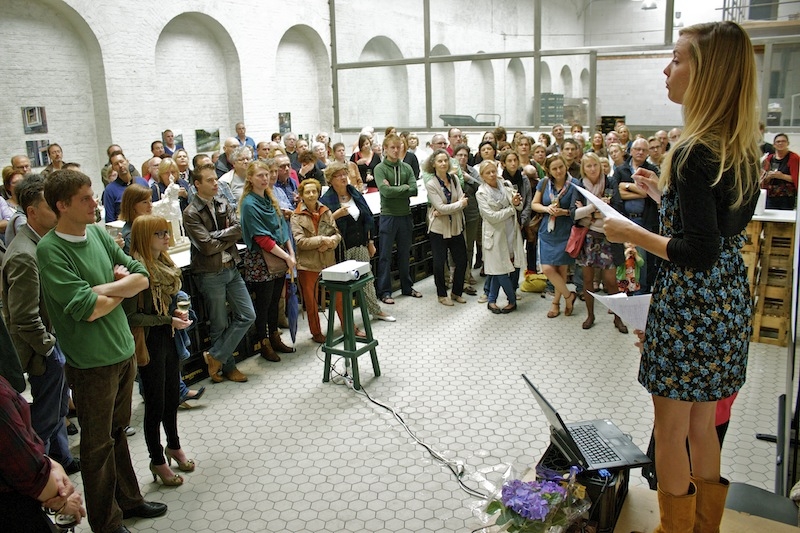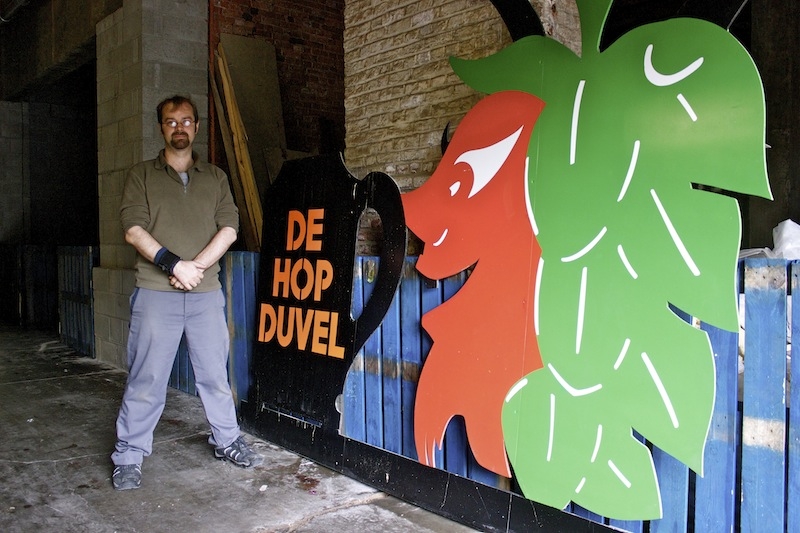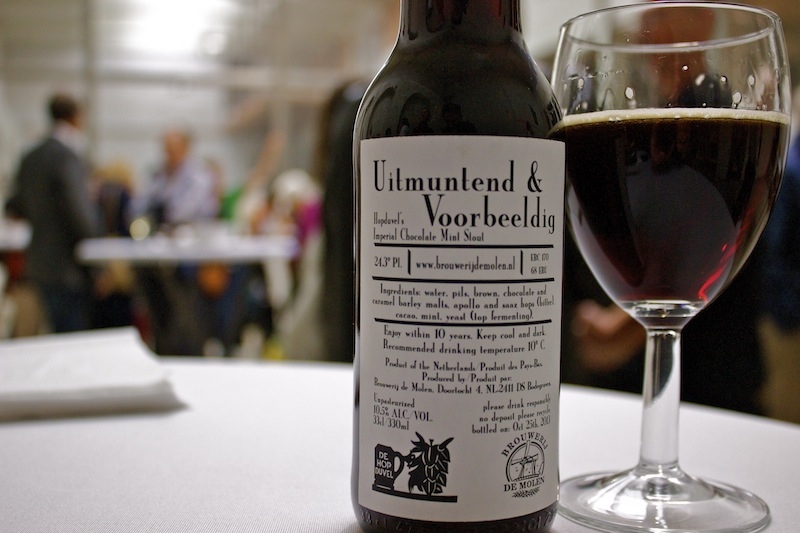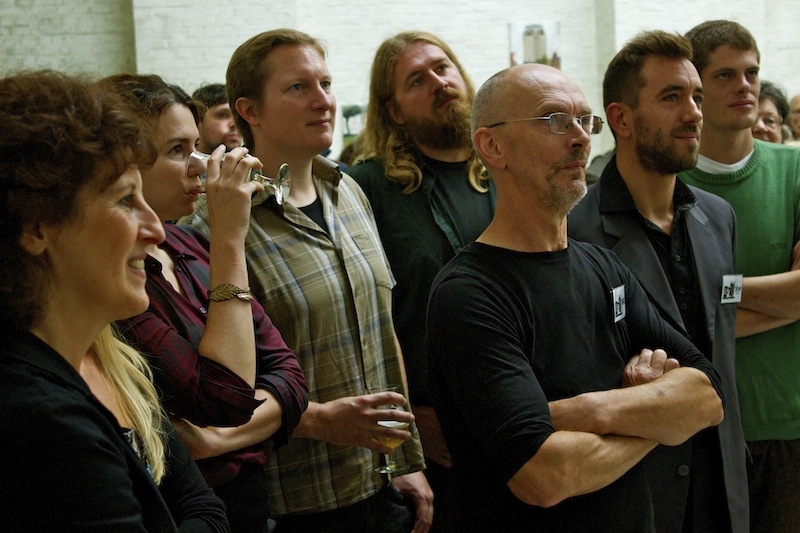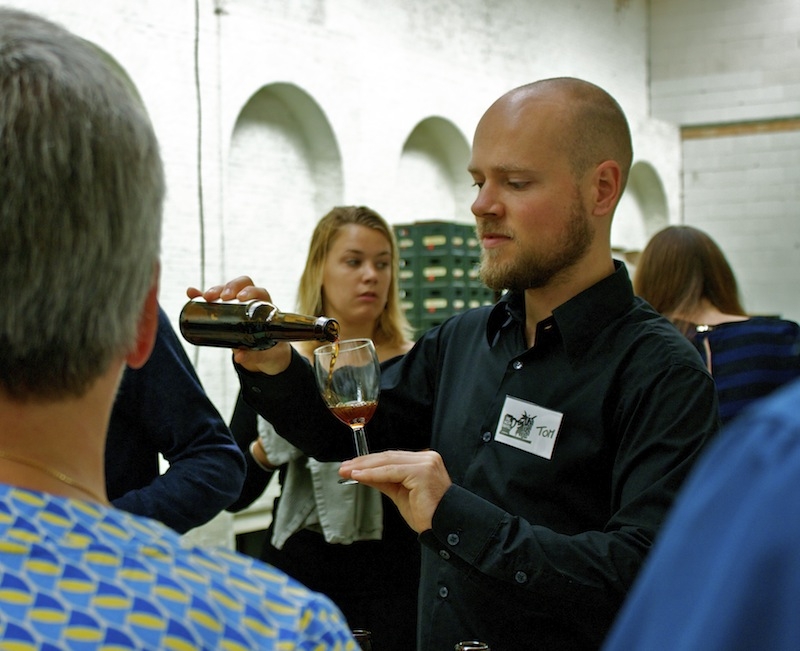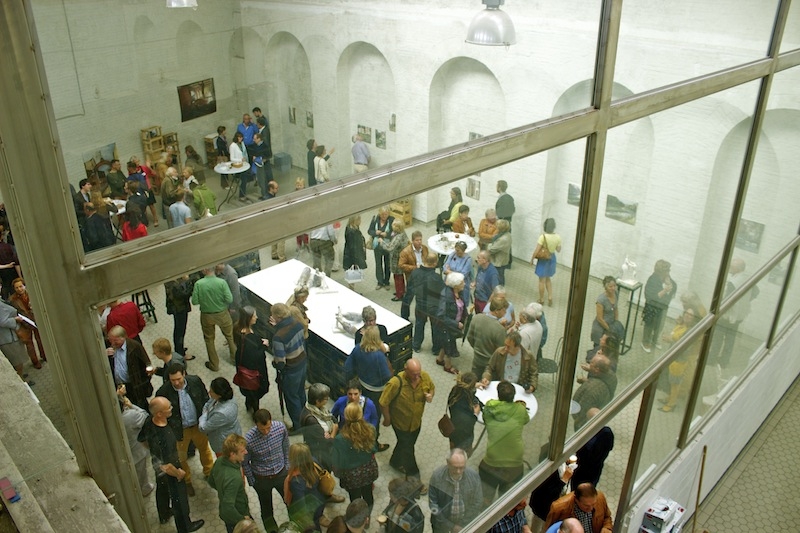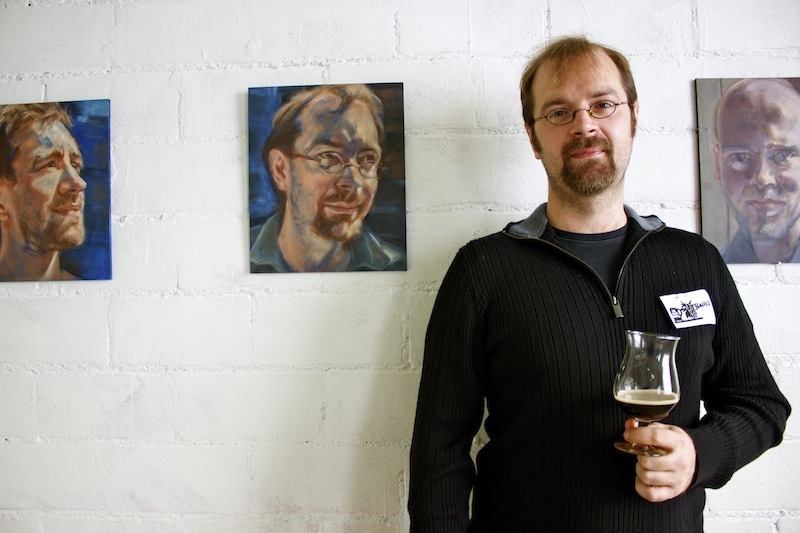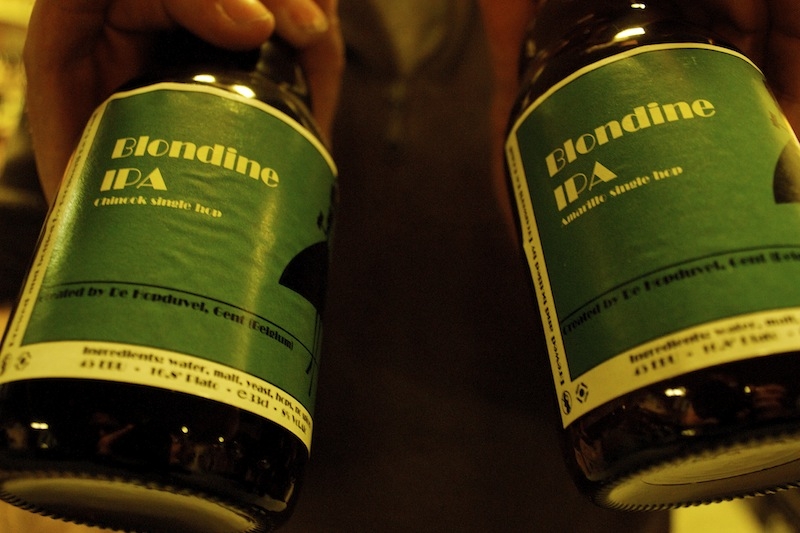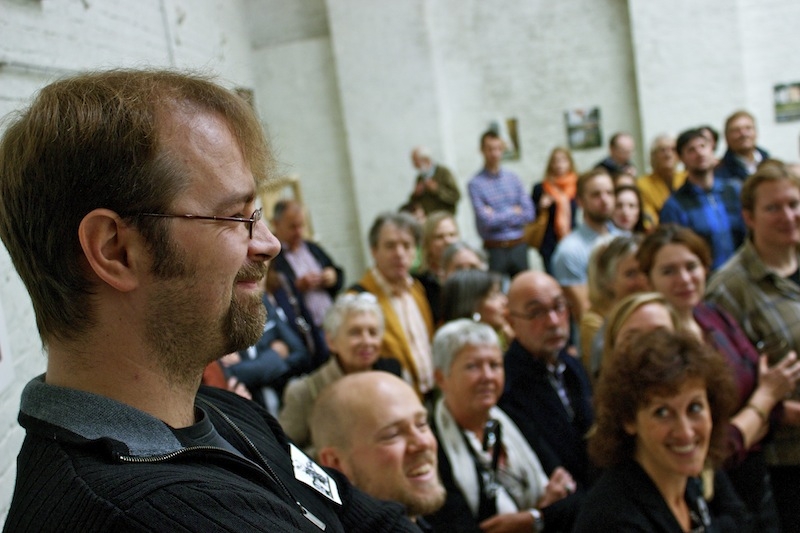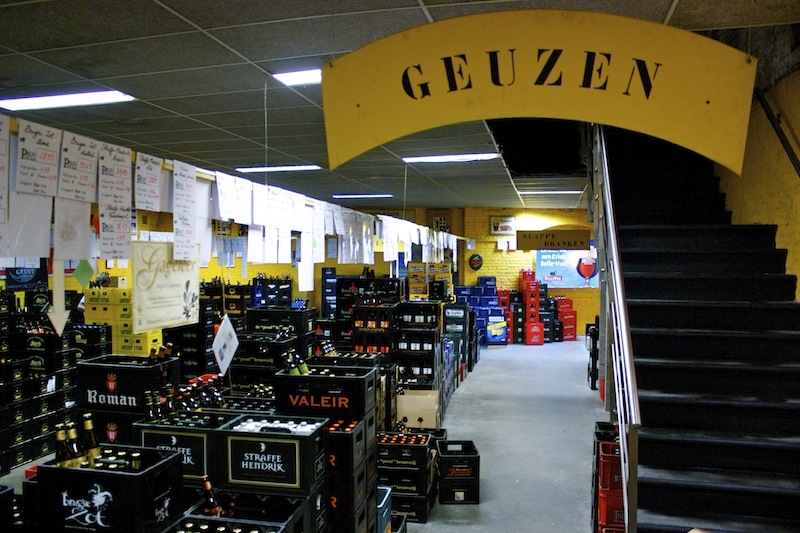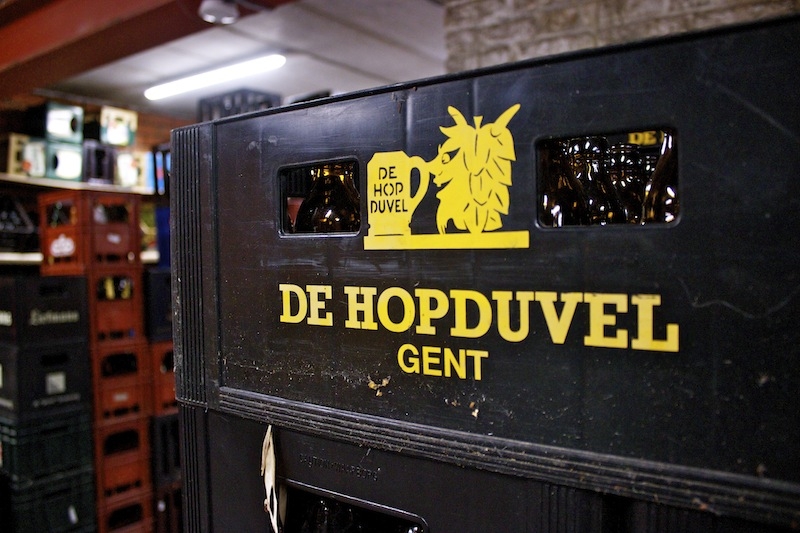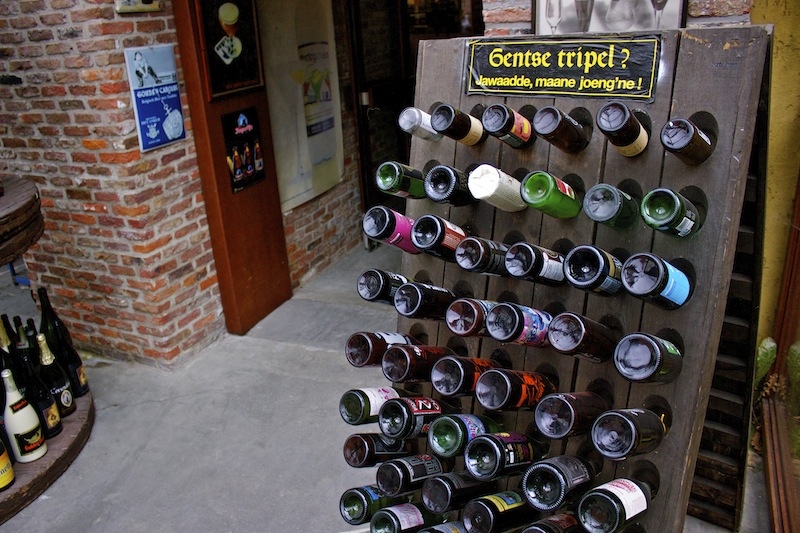The art and history exhibition which took place at De Hopduvel beer shop in Ghent a few weeks ago demonstrated the rich heritage of a building which plays host to a famous beer shop and which within the next few years will house the city’s newest brewery.
Opening as a beer shop in 1982, De Hopduvel was named after the mythological devil who hails from the hop-growing region of Asse.
The exhibition last month included art installations, paintings and portraits from five local female artists, each work exploring the building’s connections to the local area over the years. It kicked off with a presentation from family member and archeologist, Kim Van Liefferinge, about the building’s transition from former steam engine factory (‘Van De Kerchove’) to a place which enjoys the perfect conditions for storing beer.
Significantly, the exhibition took place in the space that is to become De Hopduvel’s brewery.
OPENING A BREWERY IN GHENT
De Hopduvel already contract brew their own beers at other breweries in the area. Their Gentse Tripel is brewed at Brouwerij Van Steenberge in Ertvelde. Brouwerij De Graal in Brakel brew their Gentse Stout.
They’ve also enjoyed a number of collaborations with high profile breweries over the years, in particular a beer they’ve named ‘Uitmuntend & Voorbeeldig’, an Imperial stout of 10.5% ABV which was brewed at De Molen brewery in the Netherlands and served up for guests at the exhibition.
“It’s a beer for the very niche market,” Ignace Deprez of De Hopduvel says, as we chat about the exhibition, the development of the shop and the vision for Ghent’s newest brewery. “Our objective for this beer was to make something that people had not yet tasted.”
De Molen and De Hopduvel used a base beer which Ignace says is “a mixture of a stout, a quadrupel and a barleywine” to which they added heavy doses of mint and cacao. It was then aged in rum barrels for 6 months.
The name ‘Uitmuntend & Voorbeeldig’ translates roughly as ‘Outstanding & Exemplary’ with a play on words referencing the ingredients (‘munt’ means mint). Even after aging, it maintains a strong mint aroma and taste and the coffee and chocolate malts are flanked by a warming rum kick. “It’s a heavy dessert beer,” Ignace says.
The construction of the brewery building itself is set to be completed by the end of this year after which the equipment will be installed and production will begin. The project is a costly and time-consuming one for a busy shop with a small staff. “I think it will be between two and four years that the brewery will start to function,” says Ignace. “All the papers are ok so far. It’s a big investment.”
WHO’S INVOLVED IN DE HOPDUVEL BUSINESS?
De Hopduvel family business has been in the hands of Marc Van Liefferinge and Carine Deledicque for many years but their daughter, Silke Van Liefferinge is currently in the process of taking over the management of the business with Tom De Vriendt. Stijn Cocquyt has recently come on board to take the team to six in number.
Not only do Silke and Tom possess strong business and management skills, but they are both creative people. Silke stood in as photographer at the exhibition and Tom is a brewer. “I will use my experience to act as taster and advisor,” says Ignace. “Tom will use his skills to produce the beers as head brewer.”
What type of brewery will De Hopduvel be? “We will experiment,” says Ignace. “We will have fun. We will try new styles. We will come up with new beers.” Some of the beers they brew at other facilities will remain on contract due to the fact that the new brewery will have limited production capacity.
“We are aiming for a small sized brewery, not a nano-brewery, but a microbrewery,” Ignace says. “We have already talked to several breweries and some are very excited to collaborate with us.”
ART, HISTORY, BEER AND BREWING
The launch of the exhibition took place on Sunday 31 August 2014 (and runs until 27 September). It featured work from Ghent based artists on the theme of De Hopduvel’s connection with the local community on the Coupure Links: including Adinda Baro’s art installations; Griet Callewaert’s images and drawings; and Françoise Dedonder’s abstract oil paintings.
The artist responsible for organising the whole event, Monique Van Liefferinge, also happens to be the sister of the shop owner and the inclusion of her artwork was especially emotive given that she opened a café with Toon Denooze nearby (De Hopduvel Café). Monique’s brother, Marc, would open the beer shop with Toon and Jacques two years later.
Perhaps most touching of all, however, were the portraits of De Hopduvel staff members created by Jeannine Vereecken which hung along the wall on the top floor of the building in the area which will become the new brewery’s tasting rooms.
The beers pouring at the exhibition included a special version of their Blondine IPA, an American style India Pale Ale which is brewed at De Graal for De Hopduvel. Usually this beer is made with Chinook hops but they rolled out an Amarillo version on the evening.
IGNACE AND BOBOCHAMP
Ignace himself started out as a wine connoisseur before switching to beer. “There’s a lot more variety with beer than with wine,” says Ignace. “Not only are there a huge amount of beer styles, but nowadays people even blend styles. There’s so much you can do with beer that you can’t do with wine.”
His RateBeer profile reveals a prolific taster. His handle on the beer rating website is ‘BoBoChamp’, a throwback to his wine tasting days. “That’s the name I had when tasting wine,” says Ignace. “It comes from my three favourite regions of wine. Bourgogne. Bordeaux. Champagne.”
Bobochamp has tasted a lot of beers. Top of his list is Närke Kaggen Stormaktsporter, a Swedish Imperial stout brewed with heather honey and aged on oak which he tells me “you fall in love with from the look alone” and which he describes as “super clean, complex and balanced.” Kentucky Brunch from Toppling Goliath and the first batches of Chouffe Houblon Dobbelen IPA Tripel from Brasserie d’Achouffe round out his list of top three beers from the 5,430 he has rated.
When Ignace started working at De Hopduvel beer shop in the mid 2000s the ‘artisanal’ beer scene in Belgium was really kicking off. He talks about how he reached out to the smaller, newer more experimental breweries for stocking their beers in the shop. “I came into the shop in 2007 and from what I remember, we had about 350 beers at that moment,” Ignace says. “Now we have 1,100 beers.”
A WARNING TO BELGIUM
Ignace is proud of Belgian beers, but he gets equally excited about beers from other parts of the world. There’s a warning that Belgian brewers must keep innovating if they are not to fall behind.
What sets Belgian beers apart from the rest of the world? “Diversity,” he says. “At this moment. We have so many more different styles than any other country in the world. But we have to watch out. America is coming close.”
“We struck Gold years ago: Dubbels, Tripels, White beers, Saisons and so on,” he says. “And then the Americans came here to study and learn from us and they went home to copy those styles. At this moment, they are making more new styles and we have just stayed still. We haven’t moved.”
Ignace likes to bring in beers from other countries as a matter of education. “We brought in beers for Mikkeler to show both customers and brewers in Belgium that there are really good beers in other parts of the world with beer styles that are rare in Belgium: the IPA, the Porter, the Stout, the Barleywine, the barrel aged beer.”
“In some way we succeeded, because the small breweries in Belgium are starting to experiment,” he says. “If we don’t do that and we stay stubborn, we will lose our popularity in the world.”
DE HOPDUVEL BREWERY
The shelves of the shop house bottles of Heady Topper from the Alchemist and Pliny the Elder from Russian River Brewing Company, two American Double IPAs revered the world over. There’s a bottle of Hunahpu’s Imperial Stout from Cigar City Brewing, a beer which is double aged in both rum and apple brandy barrels and retails for more than €100. These beers sit side-by-side with Belgian classics such as Cantillon and Orval as well as homegrown newcomers such as De Dochter Van De Korenaar.
The beer on their shelves might be a good indication of the direction their brewery might be taking.


